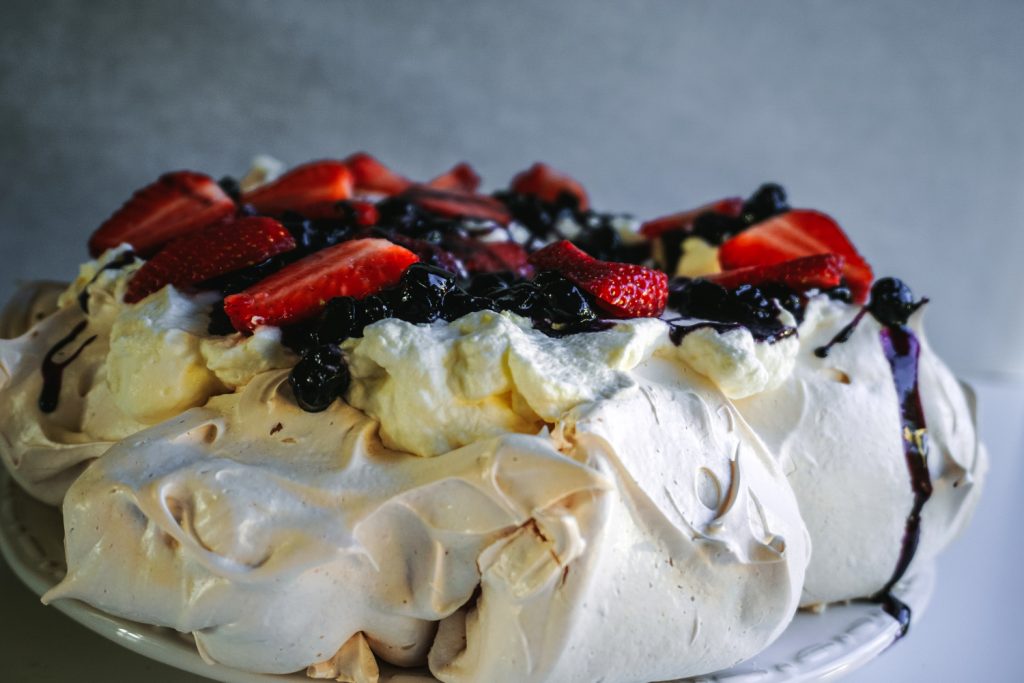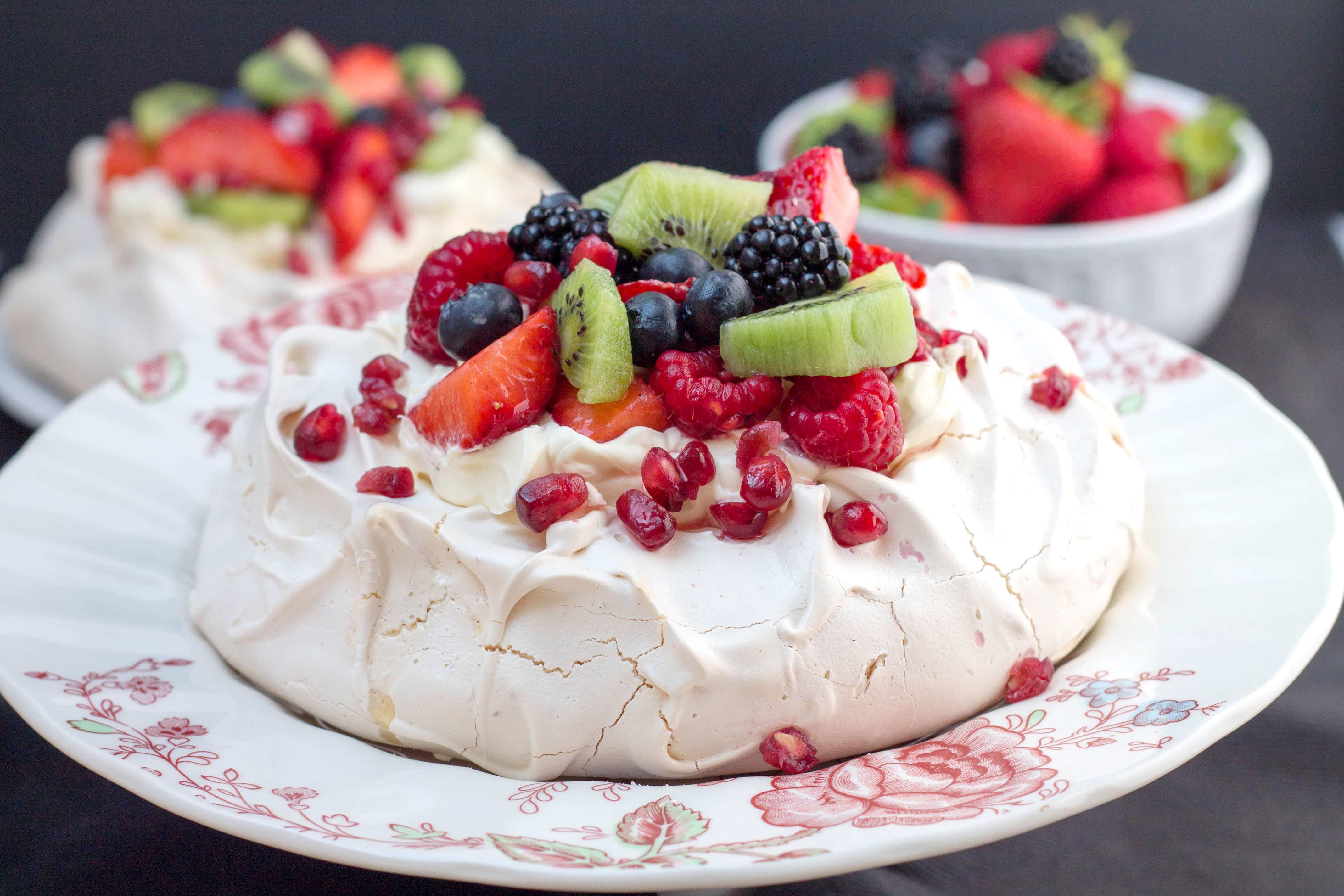Indulge in the delectable world of the Pavlova, a dessert that combines a crisp meringue base with a fluffy interior and a symphony of flavors. Its origins intertwined with the legendary ballerina Anna Pavlova, this dessert has captivated taste buds and become a culinary icon around the globe.
Throughout history, the Pavlova has undergone culinary transformations, embracing regional variations and creative interpretations. Join us on a journey to explore the original Pavlova recipe, its cultural significance, and the secrets behind its enduring appeal.
Origins and History
The Pavlova, a delectable meringue-based dessert, owes its name to the legendary Russian ballerina, Anna Pavlova. During her 1926 tour of Australia and New Zealand, her ethereal grace and captivating performances inspired pastry chefs to create a dessert that embodied her artistry.
The exact origin of the Pavlova is disputed, with both Australia and New Zealand claiming its invention. However, the most widely accepted account attributes its creation to Bert Sachse, a chef at the Hotel Esplanade in Perth, Australia, in 1935. Sachse named the dessert in honor of Pavlova, who had performed in Perth a few years earlier.
Evolution over Time
Over the years, the Pavlova has undergone subtle evolutions. Initially, it was a simple meringue topped with whipped cream and fresh fruit. However, variations emerged, including the addition of passionfruit pulp, berries, and other toppings.
Cultural Significance
The Pavlova has become an iconic dessert in both Australia and New Zealand, symbolizing national pride and cultural identity. It is a staple at celebrations and gatherings, and its popularity has spread to other countries, including the United Kingdom and the United States.
Ingredients and Composition

The original Pavlova recipe is a delicate balance of a few essential ingredients, each playing a crucial role in creating its characteristic texture and flavor.
Meringue Base
The meringue base is the foundation of the Pavlova. It is made by whipping egg whites with sugar until stiff peaks form. This creates a light and airy structure that provides the base for the topping. The sugar content is crucial, as it stabilizes the meringue and prevents it from deflating.
Toppings
The classic Pavlova topping is made with whipped cream and fresh fruit, such as strawberries, kiwis, and passion fruit. The whipped cream adds a rich and creamy texture, while the fruit provides sweetness, acidity, and a vibrant color contrast. Variations of the topping include using other fruits, such as berries, mangoes, or bananas, or adding flavored whipped cream, such as vanilla or chocolate.
Variations and Adaptations
Over the years, many variations and adaptations of the original Pavlova recipe have emerged. Some common variations include:
- Mini Pavlovas: Individual-sized Pavlovas, perfect for parties or special occasions.
- Chocolate Pavlova: Adding cocoa powder or melted chocolate to the meringue base for a rich chocolate flavor.
- Gluten-free Pavlova: Using almond flour or cornstarch instead of traditional flour to create a gluten-free version.
- Eton Mess: A deconstructed Pavlova with crushed meringue, whipped cream, and fruit, served in a glass or bowl.
These variations demonstrate the versatility of the Pavlova recipe and its adaptability to different tastes and dietary preferences.
Preparation Methods
Creating the perfect Pavlova requires a combination of precision and attention to detail. Let’s delve into the step-by-step process of making the original Pavlova meringue base, exploring the techniques and tips for achieving the desired crispy exterior and fluffy interior.
We will also discuss different methods for preparing the topping, such as whipped cream, fruit, or other garnishes.
Creating the Meringue Base
- Preheat the oven: Begin by preheating your oven to 275°F (135°C). Line a baking sheet with parchment paper.
- Separate the eggs: Carefully separate the egg whites from the yolks. The egg whites must be completely free of any traces of yolk, as any fat will prevent the meringue from whipping properly.
- Whip the egg whites: In a clean bowl, use a hand mixer or stand mixer to whip the egg whites until they form soft peaks. Gradually add the sugar while continuing to whip until the meringue is stiff and glossy.
- Add the vinegar and cornstarch: Once the meringue is stiff, add the vinegar and cornstarch and mix until combined. These ingredients help stabilize the meringue and prevent it from collapsing.
- Shape the meringue: Transfer the meringue to the prepared baking sheet and shape it into a circle or oval, about 8-10 inches in diameter. Use a spoon or spatula to create a slight indentation in the center.
- Bake the meringue: Bake the meringue for 1-1.5 hours, or until the exterior is crispy and the interior is fluffy. Turn off the oven and leave the meringue inside to cool completely.
Preparing the Topping
Once the meringue base is cooled, it’s time to prepare the topping. Here are a few popular options:
- Whipped cream: Whip heavy cream until stiff peaks form. Sweeten the cream with sugar or vanilla extract to taste.
- Fruit: Fresh fruit, such as berries, kiwis, or peaches, can be arranged on top of the meringue. For a sweeter topping, macerate the fruit in sugar or fruit juice before using.
- Other garnishes: Chopped nuts, chocolate shavings, or edible flowers can add a touch of elegance and flavor to the Pavlova.
Presentation and Serving

The traditional presentation of Pavlova involves placing the meringue base on a serving platter and topping it with whipped cream and fresh fruit. The meringue is typically shaped into a circle or oval, and the whipped cream is piped onto the top in swirls or rosettes.
Fresh fruit, such as berries, kiwi, or passion fruit, is then arranged on top of the whipped cream.In recent years, there have been many creative and modern ways to present Pavlova. Some chefs have opted to shape the meringue into different forms, such as hearts, stars, or even animals.
Others have used different toppings, such as chocolate ganache, caramel sauce, or ice cream.Pavlova is a versatile dessert that can be served with a variety of accompaniments. Some popular choices include:
- Sauces: fruit coulis, chocolate sauce, or caramel sauce
- Coulis: a thick, smooth sauce made from pureed fruit
- Ice cream: vanilla, chocolate, or fruit-flavored ice cream
Cultural Impact and Influence
The Pavlova has garnered global acclaim, transcending its origins to become a beloved dessert worldwide. Its variations have proliferated, reflecting the diverse culinary traditions and preferences of different regions.
Global Popularity and Variations
The Pavlova has found a home in many countries, each adding its own unique touches. In New Zealand, it is a national dish, often adorned with passion fruit, kiwi, or berries. In Australia, it is known as the “Pav” and is frequently topped with strawberries and cream.
The United Kingdom has embraced the Pavlova, infusing it with a touch of British flair by incorporating fruit curds and coulis.
National Dish and Cultural Icon
In some countries, the Pavlova has become a symbol of national pride. In New Zealand, it is synonymous with the country’s culinary identity and is often served at special occasions and celebrations. Similarly, in Australia, the Pavlova is a cherished dessert, representing the nation’s love for sweet treats and culinary creativity.
Influence on Other Desserts
The Pavlova’s impact extends beyond its own popularity. It has inspired the creation of other desserts, showcasing its versatility and adaptability. The “Eton Mess,” a British dessert, is a whimsical take on the Pavlova, combining strawberries, cream, and crumbled meringue.
In the United States, the “Pavlova Alaska” is a frozen dessert that features a meringue base topped with ice cream and whipped cream.
Final Thoughts
The Pavlova, a testament to culinary artistry, continues to enchant dessert enthusiasts worldwide. Its legacy extends beyond its delectable taste, embodying cultural pride and inspiring culinary innovations. Whether enjoyed as a traditional masterpiece or reimagined with modern flair, the Pavlova remains a timeless dessert that evokes both nostalgia and culinary adventure.
Common Queries
What is the origin of the Pavlova?
The Pavlova is believed to have originated in honor of the Russian ballerina Anna Pavlova during her 1926 tour of Australia and New Zealand. Both countries claim the dessert as their own, with variations in the recipe reflecting regional preferences.
What are the key ingredients in the original Pavlova recipe?
The original Pavlova recipe consists of egg whites, sugar, vinegar, and cornstarch. These ingredients are whipped together to create a meringue base that is baked until crisp on the outside and fluffy on the inside.
How can I achieve the perfect crispy exterior and fluffy interior for my Pavlova?
To achieve the perfect texture, ensure that the egg whites are beaten until stiff peaks form. Bake the Pavlova at a low temperature for an extended period, allowing it to dry out slowly. Avoid opening the oven door during baking, as this can cause the Pavlova to collapse.
What are some creative ways to present the Pavlova?
Beyond the traditional presentation with whipped cream and fruit, the Pavlova can be adorned with a variety of toppings. Consider using edible flowers, chocolate shavings, or a drizzle of fruit coulis to elevate its visual appeal.
How can I store the Pavlova to maintain its freshness?
Store the Pavlova in an airtight container at room temperature for up to 2 days. Avoid refrigerating the Pavlova, as this can cause the meringue to soften and lose its crisp texture.
